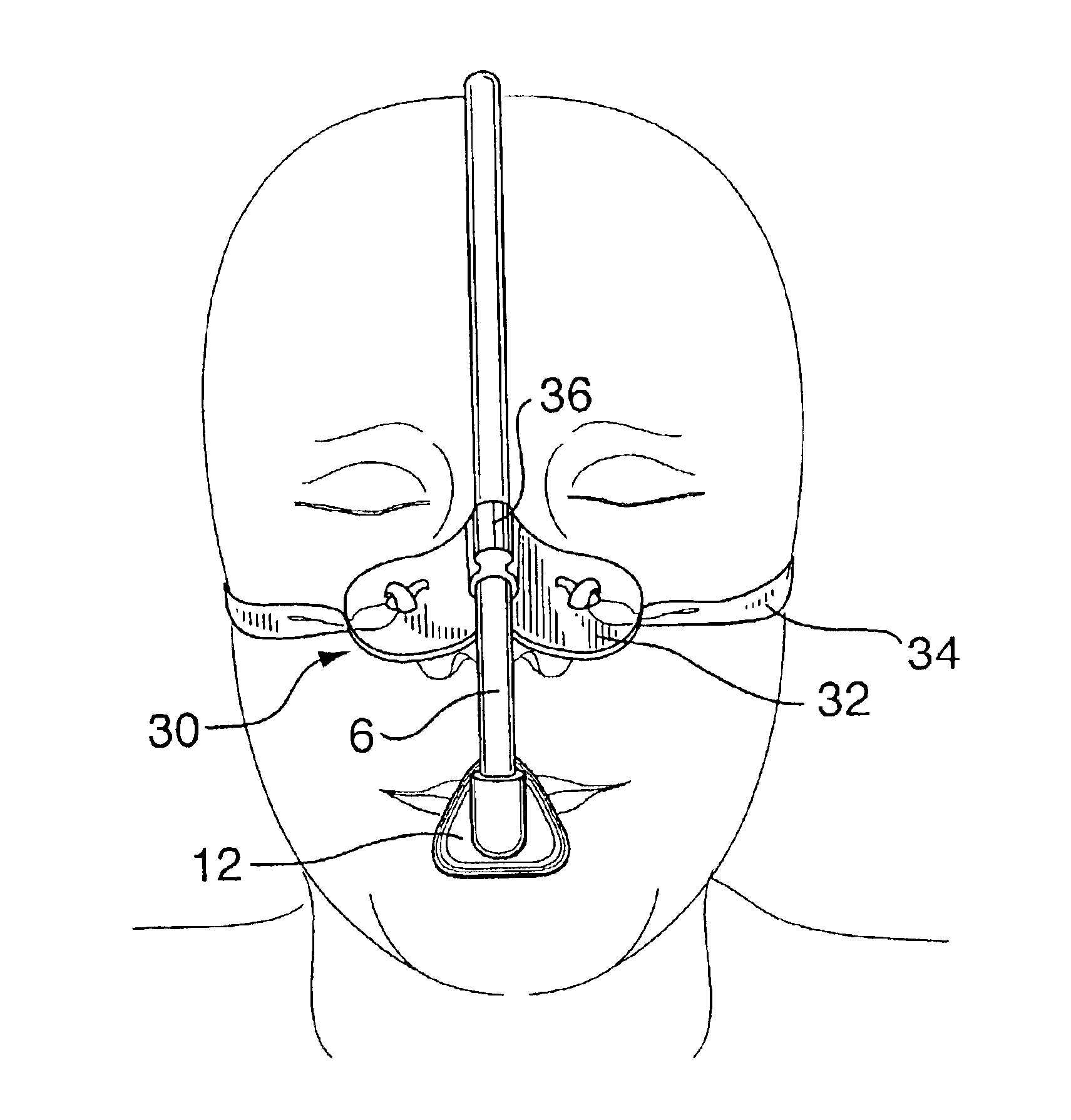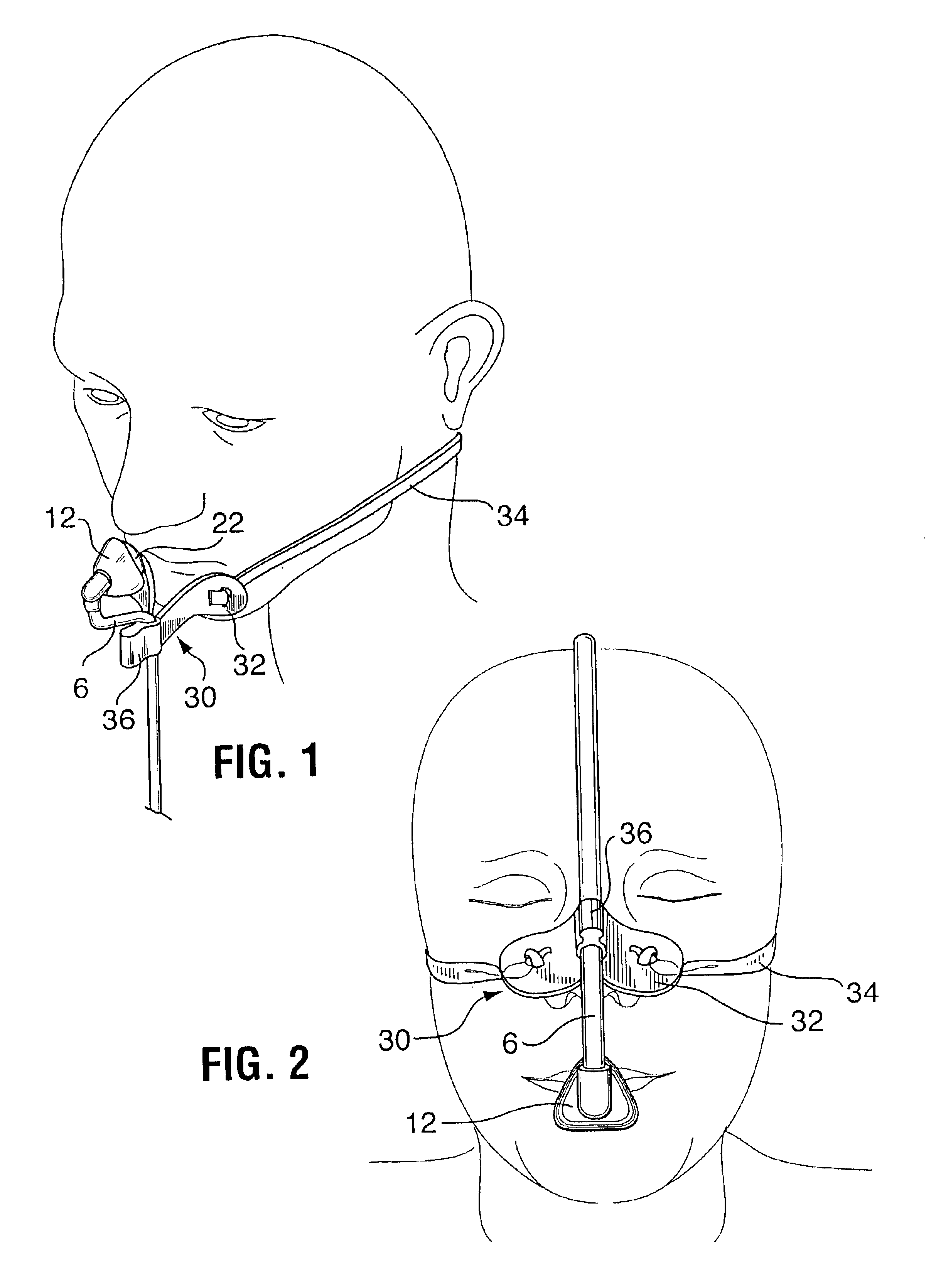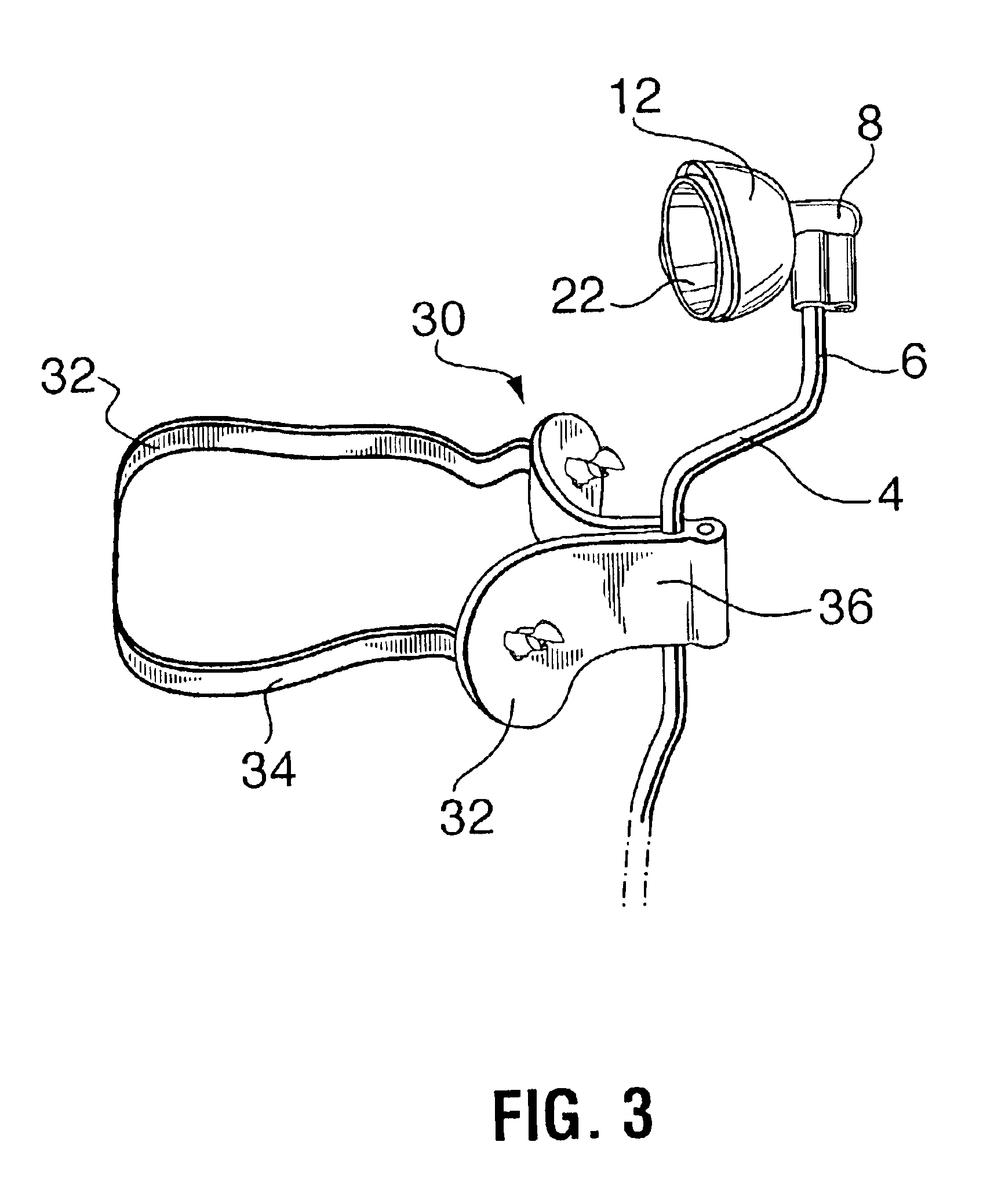Lightweight oxygen delivery device for patients
a patient oxygen and light weight technology, applied in the field of new oxygen delivery systems, can solve the problems of not being able to effectively fit all face sizes and shapes, awkward and inconvenient, and patents often get nose bleeds, and achieve the effect of economic manufacture and effective operation
- Summary
- Abstract
- Description
- Claims
- Application Information
AI Technical Summary
Benefits of technology
Problems solved by technology
Method used
Image
Examples
Embodiment Construction
In the following description, similar features in the drawings have been given similar reference numerals.
Turning to FIG. 1, there is shown a lightweight oxygen delivery device (2), in operation and worn by a patient. The device comprises an elongated oxygen delivery tube (4) which is bendable to a particular shape and which can maintain that shape. In the illustrated embodiment, this feature is achieved by a wire (6) embedded in tube (4) during its manufacture. At one end of oxygen delivery tube (4) is a rigid elbow (8), provided with an oxygen delivery passageway (10) extending from one end of the elbow to the other (FIG. 5), oxygen delivery tube (4) communicating with that passageway. An oxygen diffuser (12) is connected to the other end of elbow (8) as illustrated. This diffuser has a body formed from a wall (14), of cup-shaped appearance, extending from a base (16) which circumscribes an oxygen outlet (17) which communicates with the oxygen delivery passageway (10) of elbow (8)...
PUM
 Login to View More
Login to View More Abstract
Description
Claims
Application Information
 Login to View More
Login to View More - R&D
- Intellectual Property
- Life Sciences
- Materials
- Tech Scout
- Unparalleled Data Quality
- Higher Quality Content
- 60% Fewer Hallucinations
Browse by: Latest US Patents, China's latest patents, Technical Efficacy Thesaurus, Application Domain, Technology Topic, Popular Technical Reports.
© 2025 PatSnap. All rights reserved.Legal|Privacy policy|Modern Slavery Act Transparency Statement|Sitemap|About US| Contact US: help@patsnap.com



